Romania’s Palace of the Parliament: Horrible Kitsch or Masterpiece?
Written and photographed by Melline Galani.
Romania is not only known worldwide for its vampire myths (Dracula) but also for having the world’s second largest administrative building (after the Pentagon), which is also the most expensive administrative building and overall heaviest building in the world – the Palace of the Parliament (known universally as the People’s House – “Casa Poporului,” in Romanian).
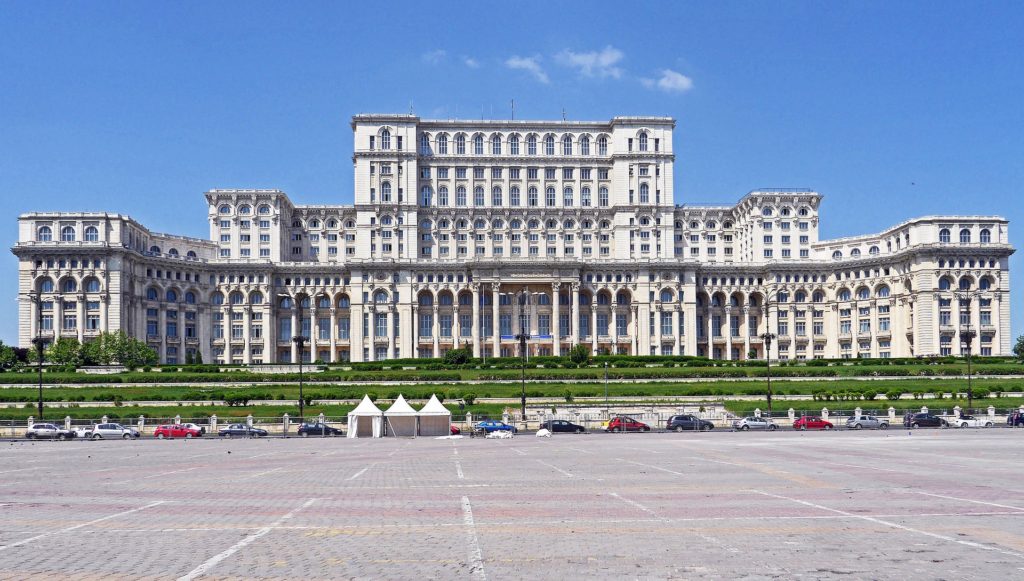
This communist-era behemoth was designed and started under the Ceaușescu regime in 1984 but is not yet finished (nor will it ever be, if you ask me). Communist leader Nicolae Ceaușescu ruled Romania from 1965 until his sudden and violent death in December 1989 when the Romanian Revolution took place. His oppressive regime left deep scars in all aspects of life, including urban planning and architecture.
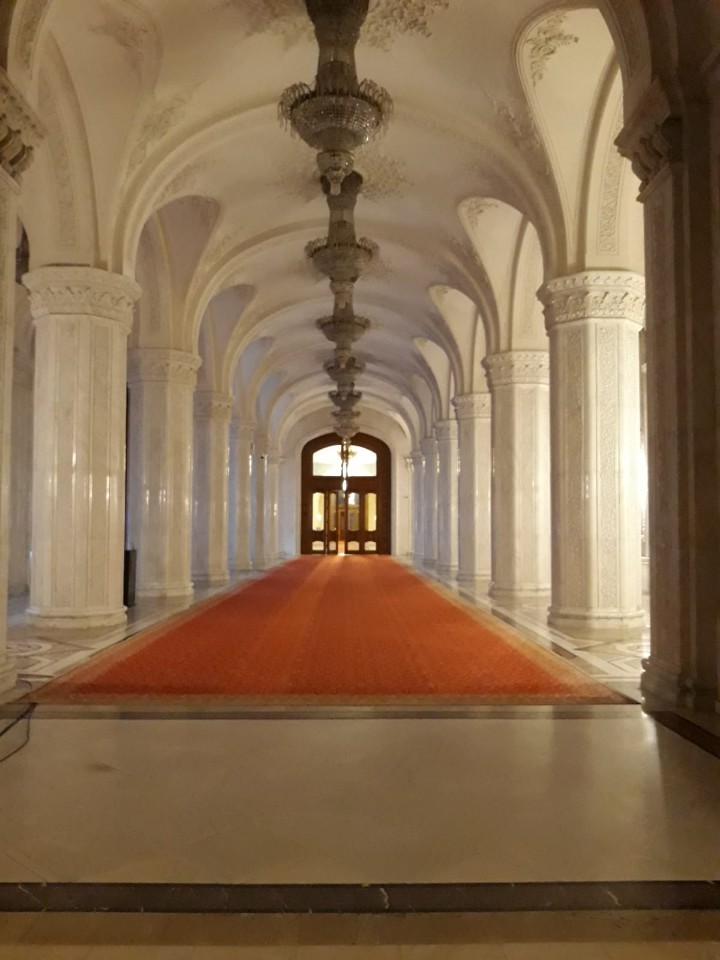
Originally designed by a young architect named Anca Petrescu, who was just 28 at the time, with the help of a team of approximately 700 architects, this monstrosity was designed to accommodate almost all the apparatus of the communist state. Today, it hosts the Romanian parliament, a conference center, and Romania’s National Museum of Contemporary Art.
Ceaușescu was impressed by the societal organization and mass adulation of North Korea’s Juche ideology during his East Asian visit in 1971 (he was also a close friend with North Korean leader, Kim Il-sung), and decided to implement similar policies in Romania with the stated goal of turning Romania into a “multilaterally developed socialist society.” Ceaușescu wanted a civic center more in line with the country’s political stance, as an intended replica of Pyongyang, the capital of North Korea, so he started a reconstruction plan of Bucharest based on the style of socialist realism. The Palace of the Parliament was the center of this project.
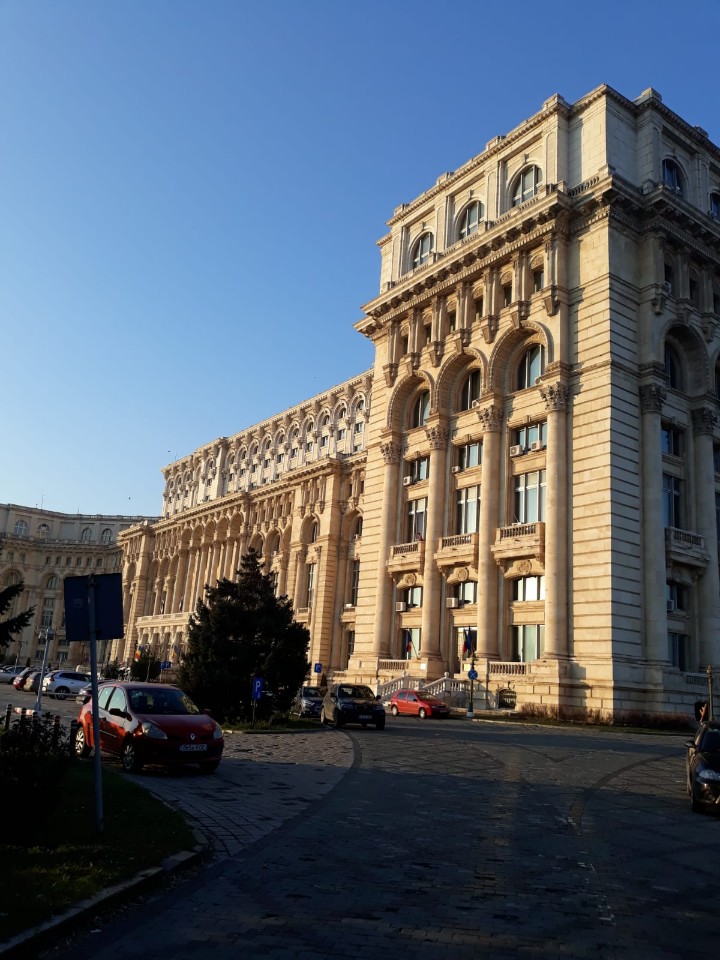
The Palace of the Parliament rises from the place where there was once an old Uranus neighborhood, a district with hills once crisscrossed with small streets paved with cubic stone, and old and quaint Romanian houses with bohemian glamour, many of which were brought to light by architects from centuries prior. The people living in those houses formed the middle class of Bucharest society. They were traders, craftsmen, and owners of small businesses. In order to make space for the enormous building, 20 churches were destroyed (and eight moved), 10,000 homes were demolished, and over 57,000 families were evicted.
The Palace of the Parliament has a height of 84 meters (276 ft.), a floor area of 365,000 square meters (3,930,000 square feet), and a volume of 2,550,000 cubic meters (90,000,000 cubic feet), weighing about 4,098,500,000 kilograms in total. Built and furnished exclusively with Romanian materials, the building reflects the work of the country’s best artisans. The building was made with construction materials produced in Romania, amongst which are 1,000,000 cubic meters of marble, 550,000 tons of cement, 700,000 tons of steel, 2,000,000 tons of sand, 1,000 tons of basalt, 900,000 cubic meters of rich wood, 3,500 tons of crystal, 200,000 cubic meters of glass, 2,800 chandeliers, 220,000 square meters of carpets, and 3,500 square meters of leather.

The entire construction is the result of over 100,000 workers’ effort, with more than 20,000 persons working 24 hours a day in three shifts during peak periods. Moreover, between the years 1984 and 1990, 12,000 soldiers took part in the construction work. Construction began in 1984 and initially should have been completed in only two years. The construction period was then extended until 1990, but even now it remains unfinished. Only 400 rooms and two meeting rooms are finished and in use out of the planned 1,100 rooms. The building has eight underground levels, the last one being a nuclear bunker (a room with 1.5-meter-thick concrete walls that cannot be penetrated by radiation) linked to the main state institutions by 20 kilometers of catacombs. Nicolae Ceaușescu feared nuclear war.
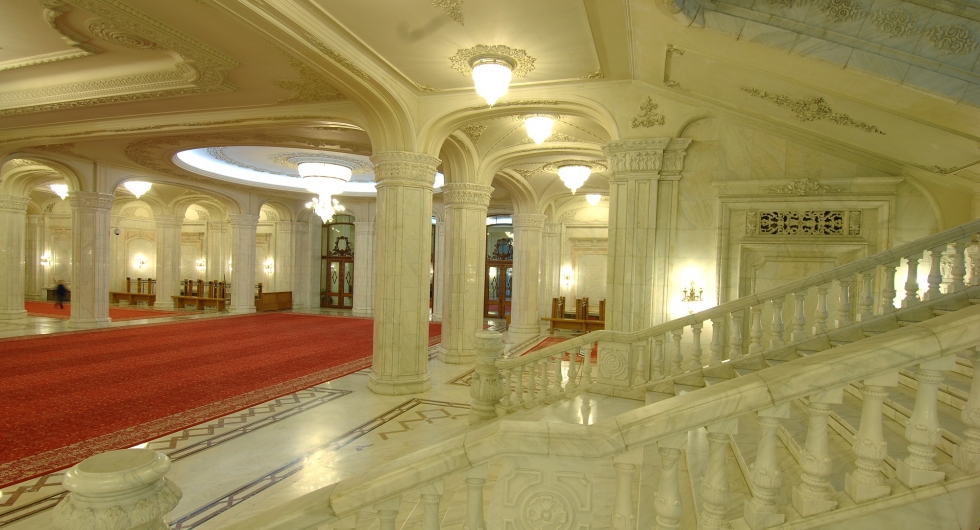
Thousands of workers died in connection with the construction of the Palace of the Parliament, but the real number remains a mystery. These days, urban legends circulate saying that the building is haunted by ghosts who show up at night in the hallways breaking seals, whistling, or making security systems sound. These ghosts are thought to be the souls of those who died during construction of the edifice.
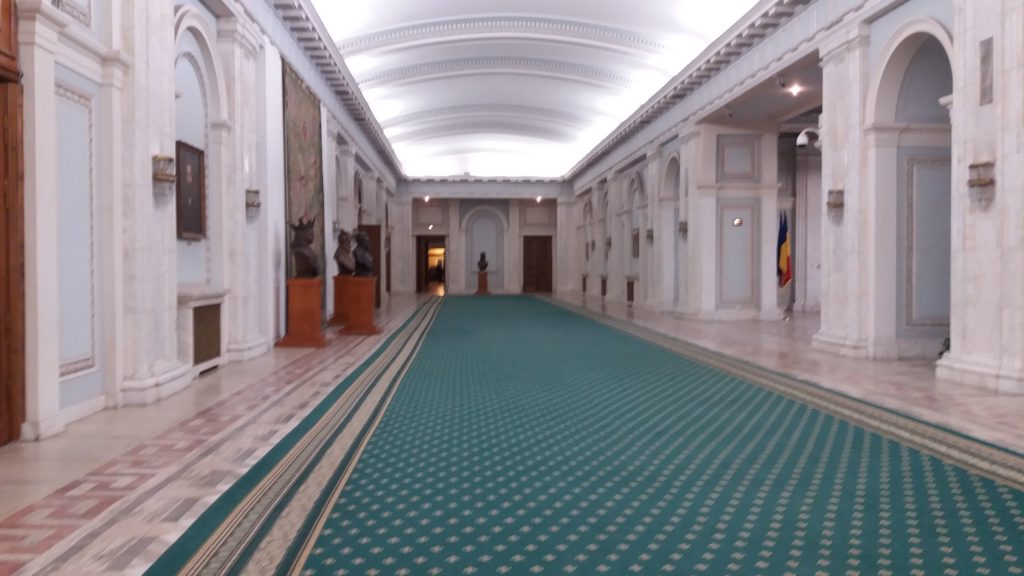
The Palace of the Parliament was first opened to public shortly after the Romanian Revolution in 1989. I remember going there with my grandmother (I was around 12 years old at the time), and we were astounded by the luxury and opulence we saw inside. Nowadays, guided tours take visitors through a small selection of dazzling rooms, huge halls, and quarters used by the Senate (when not in session). The interior is a luxurious display of crystal chandeliers, mosaics, oak paneling, marble, gold leaf, stained-glass windows, and floors covered in rich carpets.
If one happens to go to Romania’s capital city of Bucharest, the Palace of the Parliament is a must-see, but a reservation is required for visits as well as an ID card or passport. A standard tour costs less than ten U.S. dollars/person and is available all year round except national holidays. Moreover, near the Palace of the Parliament is another grotesque building under construction that is almost ready – the People’s Salvation Cathedral (“Catedrala Mantuirii Neamului,” in Romanian) – which is the tallest and largest Orthodox church in the world by volume.
THE AUTHOR
Meline Galani is a Romanian enthusiast , born and raised in the capital city of Bucharest, and is currently living in Gwangju. She likes new challenges, learning interesting things and is incurably optimistic.







